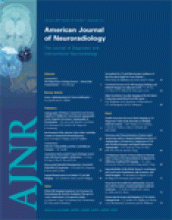E. Lavi and C.S. Constantinescu, eds. New York: Springer: 2005. 901 pages, $195.
Multiple sclerosis, as noted in the forward of the text, is an enigmatic immune-mediated disease of the central nervous system (CNS) affecting 2–3 million individuals worldwide. There is considerable interest in the investigation of the mechanism of this disease and in the improvement of diagnosis and assessment of prognosis. Multiple sclerosis is not well characterized and no cure exists. Therapeutic agents are in continual development, and there is a need in much of this research for animal models related to disease processes, including demyelination/remyelination, inflammation, and axonal pathology. It has become well-known that no single animal model reproduces the human disease and that many animal models can represent 1 or more facets of the disease. There is considerable overlap between animal models and other diseases distinct from multiple sclerosis as well. With this in mind, Drs. Lavi and Constantinescu have produced a specialist book that aims to combine and present information about every existing animal model for multiple sclerosis. The target audience for this book includes neuroscientists, neurologists, immunologists, microbiologists, and neuropathologists. Clearly, some neuroradiologists having an interest in basic neuroscience, multiple sclerosis research, and the study of related disorders will also benefit from the information in this book. For the readers of AJNR, it is thought that a primary use of this book might be as a reference for those collaborating with basic neuroscientists.
The most common experimental models for multiple sclerosis can be described as immune-mediated or virus-induced, and these distinctions form the basis for the organization of the book into 4 sections. The first and longest section covers “Experimental Allergic (Autoimmune) Encephalomyelitis (EAE).” In these 576 pages and 27 chapters, EAE is given a comprehensive treatment, including history, histopathology, genetics, roles of individual cell types and processes, and a single section devoted to EAE in primates. The second section devotes 119 pages and 9 chapters to “Theiler’s Murine Encephalomyelitis Virus (TMEV)–Induced Demyelination.” The 139 pages and 13 chapters of the third section cover “Corona Virus–Induced Demyelination,” and the final shorter section has 1 chapter each on “Semliki Forest Virus-Induced Demyelination” and canine distemper virus–induced demyelination.
The chapters are organized with clearly labeled subsections and a consistent outline format that breaks the material into easily read focused segments of information. Rather than organization based on animal species, the editors chose to deal, on a chapter basis, with individual cellular and molecular CNS factors and cellular and molecular elements of the immune system. In some, but not all, chapters, individual species models are broken out and discussed in separate sections. A good example of this is in the chapter “Histopathology of EAE,” in which subsections are devoted to mouse, rat, and primate models. The structure of the book was intended to provide the opportunity to compare parallel chapters dealing with the same factor in different model systems. This is probably a very successful approach for the target audience. The organizational choice may be less successful for those who might be interested in practical characteristics of a single animal model of EAE, but the information is in the book for those willing to seek it out. A useful feature of the book is that in many chapters, the relationship of the animal model to human multiple sclerosis is elucidated with background information on multiple sclerosis, even though the chapter titles do not often indicate this content.
One observation on content is that there is relatively less space devoted to axonal pathology, even though in the chapter entitled “The Neuron and Axon in EAE,” it is noted that during the last 10 years references to “MS and axon” have increased 300% compared with references to “MS and myelin” at 30%. There is a chapter dealing with the axon in the corona virus section of the book, and in the TMEV section, the axon-related information appears in the histopathology chapter. Still, this limited coverage is probably representative of the field at large.
The manner in which the book is laid out facilitates an efficient general introduction to the field, with the opportunity to read further in areas of interest. The scope of the book seems to preclude exhaustive treatment in some areas that might be of interest to individuals beginning a research program using a single model. Each chapter is provided with an abstract and key word summary. Extensive and current reference lists follow individual chapters, though the format of the references is not consistent across chapters. Twelve pages of index are included. Many chapters include informative tables and graphics. A number of cartoons postulating cellular roles and disease processes are presented. Of particular potential utility are tables that summarize many literature studies, such as “Quantitative Trait Loci Identified for Susceptibility to EAE” in both the rat and the mouse. Another table provides a concise summary (without references) of EAE disease factors in primate and rodent models compared with (human) multiple sclerosis. A third table (of many more) provides a concise layout of major CNS myelin proteins.
There are relatively few images for a book of this size, and only 16 color images are presented in a central section of the book (away from the references in the individual chapters). Some of the images presented in gray-scale, including images of histopathology, would have been more effective in color. In more than 1 case, a figure description indicates staining with green and counterstaining with red agents, but the figure has no color. Other images appear too small in the book, clearly the result of an effort to keep the book at a manageable size.
The chapters are, in general, well written, and the editors attempted to maintain consistency across chapters. There are a few annoying problems related to copy editing. Some chapters have large blank areas that contribute to the size of the book, and some figure captions run unnecessarily onto the succeeding pages. A large-print subheading misspells “induced.” Also, some figure captions appear in text boxes instead of in a traditional format. There are sentence fragments and errors of English grammar and construction in some chapters, but they do not, in general, impede understanding.
The construction of the book appears fragile. As a result perhaps of the size of the book, the paper is thin, some of the text is in a small font, and the binding is not the best quality. This is a reasonable compromise to keep both weight and cost reasonable. However, the book, listed on-line for $195.00, will need to be handled with care.
The editors have provided a comprehensive reference text that serves a valuable purpose and may well further research in neuroscience generally and multiple sclerosis specifically. This will be a valuable resource for any scientists engaged in work with the types of animal models described and should serve to stimulate thoughts on alternative models for specific processes. It may also enhance understanding of the underlying animal pathology that is targeted by new therapeutic agents and help in extrapolation of results of drug testing.

- Copyright © American Society of Neuroradiology












